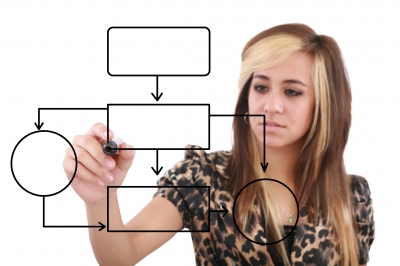 How do you market to your B2B buyers in a way that won't scare them off, but instead nudge them down the funnel towards sales? For each campaign we are faced with this question. And each time, coming up with a good strategy takes much brainstorming and forethought. But that's the nature of this business: B2B marketing is challenging.
How do you market to your B2B buyers in a way that won't scare them off, but instead nudge them down the funnel towards sales? For each campaign we are faced with this question. And each time, coming up with a good strategy takes much brainstorming and forethought. But that's the nature of this business: B2B marketing is challenging.
Enter lead nurturing, as a way to stay on your buyer's radar without being overly pushy. Because sometimes, they want you to gain their trust before you hit them with a marketing message. Just like the beginning stages of a relationship, they want to get to know you first. They want you to show them your value before they invest more time in you.
So why is lead nurturing for B2B so complex?
1) Each lead needs to match our definition of being "Sales-ready" before we can hand them off to Sales.
2) Saying the right thing to the right person at the right time in their journey is hard (plus, it implies knowing what to talk about, with whom and when to hit them with it).
Remember: nurturing does not effect those who are ready to buy, only those that aren't. When your buyers opt-in to become a lead, they are simply troubled enough by a problem that they are willing to exchange their details for access to a piece of your content which discusses it. Know that your campaigns are designed for people who are not ready to buy - at least not yet.
A webinar from Marketo on lead nurturing sums up the 4 kinds of emails that you can use in your lead nurturing strategy:
#1 Incoming lead processing campaign
This is the campaign your top-of-funnel content pushes leads to. Elements of your campaign should allow you to define what a Sales-ready lead is. Depending on the calls to action in your incoming lead nurturing campaign, you should be able to determine where the hand-off to Sales should be.
The old way of doing this is simply to give everything to Sales, allowing them to judge for themselves and segregate leads into two lists (ready to buy, not ready to buy) if they must. But many leads don't want to be interrupted with a call at all; in fact, it might even tarnish your reputation with them, causing them to sever all ties.
Alternative approaches include basing it on demographic attributes, completeness of their data profile, behavioural attributes, and lead score, but we feel that the most appropriate for the B2B world is the BANT method (Budget, Authority, Need, Timeframe).
#2 Drip campaign
This is where you customise your emails a little bit according to buyer persona and the stage they're at in their cycle. You should have one for each buyer persona.
Early stage: At this stage you are trying to loosen the status quo and get them to commit to change. Give them thought leadership and best practices content to build brand awareness, and get them thinking.
Middle stage: Your buyer recognises that they have the problem you are talking about, and is now exploring possible solutions. They are close to committing to a solution, so send them buyer's guides, RFP templates and industry information to help structure their research.
Late stage: Your buyer is narrowing down their options and need to justify a decision before making a selection. Send them company-specific information to help evaluate and reaffirm their selection.
It's of the utmost importance that you give them content that is relevant to their buying stage and buyer profile. Don't make the mistake of giving late stage content to an early stage lead (it's too soon!) or vice versa (it's not juicy enough!) - they may become irritated because it's not relevant to the stage they're at and most likely drop off.
#3 Accelerator campaigns
These campaigns have one purpose: to move prospects along buying cycle faster, with relevant "nudges" triggered by specific behaviours. In the world of software, a typical accelerator campaign would be a string of emails following a 14-day free trial sign-up.
Emails could send them step-by-step instructional tips, prompt them to watch a webinar on how to use different aspects of the software, or even request to be contacted for a live walk-through if they need more help.
#4 Lead recycling campaigns
For leads who just aren't ready to buy, you need a way to stay in touch. As a marketer, it's your job to look for behaviour that qualifies those leaked leads to send back to sales.
The best way to do this is through a steady stream of helpful content. Redistribute your top-of-funnel content. You can do this by mailing out a 'most popular' list of your best pieces. That way, your leads can opt-in to various campaigns that come off the back of those early stage pieces.
To figure out if your lead nurturing is up to par, download our free tool, the B2B Marketing Health Check:
image from freedigitalphotos.net
What other types of nurture campaigns you can think of? Share them with us in the comments section below.


